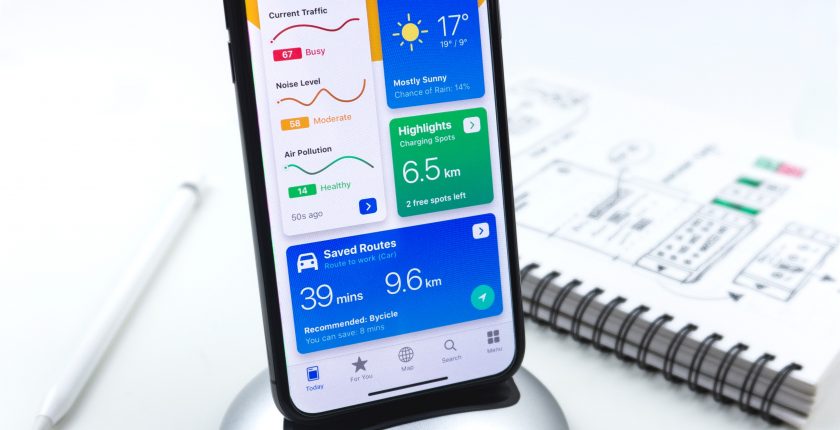South Asia Leads the Way – Addressing Gender Inequality in Access and Use of Mobile Technology
How Access to Mobile Technology Benefits and Empowers Women
Access to a mobile phone and therefore the vast possibilities contained within the internet can transform lives. The mobile phone is durable, and relatively affordable, giving it a unique capability to democratise access to the internet. As such the mobile has become the primary form of internet access, making up 85% of broadband connections (GSMA, 2021).
Mobile technology has been adapted and applied to meet development needs in a vast number of ways. This ranges from rural farmers accessing applications such as ‘iCow’ which helps monitor the health of livestock to rural widows able to save financially through the virtual banking system ‘M-Pesa’, to most recently school children able to access learning material during Covid-19 lockdowns.
For women, in particular, mobile phone ownership can be a tool for empowerment, enabling access to finance and education. For example, living in remote villages with poor/expensive transport links can make essential tasks a time-consuming experience. Historically registration for a bank account or a child’s birth certificate has meant long and costly trips to the city. Mobile applications and processes have given access to bank accounts and government offices thereby providing the ability to complete essential tasks without travel. This can then free up women to apply themselves in other areas such as starting small businesses.
Further supporting women in starting and running businesses is the availability of free online courses or learning tools that can be accessed via mobile technology. The wealth of ‘how-to’ videos and other free learning resources has freed women from reliance on books or other costly methods of learning. This has aided in closing the education gap that exists between boys and girls, where girls often attend school for fewer years than boys.
The Social Barriers that Inhibit Women’s Access to Mobile Technology
Yet despite the ready access to mobile technology, gender inequalities are being re-iterated within the mobile technology landscape. Women remain less likely than men to own a mobile phone. According to GSMA 2021 report, only 83% of women LMICs own a phone, leaving 374 million unconnected. Additionally, women in LMICS are still more likely to own basic handsets rather than smartphones that enable more comprehensive internet usage.
The gender inequality in mobile technology is underpinned by several social equalities. These include the lack of control that women often have over financial spending within a household. Where household finances are typically directed by men, women may not have the freedom to purchase a mobile phone or smartphone.
Additional social barriers include traditional beliefs surrounding gender and a women’s role within a community. This may dictate whether a woman should own a mobile phone or not, and what tasks she should use it for.
One of the biggest barriers globally to gender equity in mobile technology is digital literacy (GMSA, 2021). Digital literacy is the ability to access and navigate the digital world, such as knowing where and how to use certain platforms, applications, and other digital processes. Without these key skills, women are unable to fully utilise the potential of mobile technology which is problematic in many areas including being able to run businesses. A recent survey conducted by India SME Forum indicated that 87% of women entrepreneurs felt like they required substantial digital training (SME).
South Asia Leading on Closing the Gender Gap in Mobile Technology and Digital Literacy
The drive for gender equality within mobile technology has been particularly prevalent in South Asia where the gender gap has consistently been the widest. This drive is supported by an array of initiatives, programs, and partnerships.
For example, the Indian mobile network provider JIO has recently launched data plans for less than $2 per month. In addition to this, Jio has also launched an affordable handset that is specifically designed for first-time users.
Another initiative is a project called ‘Internet Saathi’ also based in India which runs digital literacy programs for women in rural areas. Funded by Tata Trusts and Google, the initiative educates local village women in digital skills who are then able to train women in their respective communities. ‘Internet Saathi’ has now trained more than 28 million women in digital literacy since the projects founding in 2015.
Projects and initiatives, such as those run by JIO and Internet Saathi, are part of a numerous network of programs and drives to gender-equitable access to mobile technology in South Asia. Although there is still a way to go to ensure equal access to mobile technology, initiatives such as those described above, are helping close the gap.
Bibliography
GSMA, (2021) Mobile Gender Gap Report 2021, https://www.gsma.com/r/gender-gap/
Klapper, L,. (4th April 2021) How mobile phones are changing women’s lives, https://www.weforum.org/agenda/2016/04/how-mobile-phones-are-changing-womens-lives
OECD, (2018) Bridging the Digital Gender Divide, https://www.oecd.org/digital/bridging-the-digital-gender-divide.pdf
G20 Argentina, (10th December 2020) Bridging the Gender Digital Gap, https://www.g20-insights.org/policy_briefs/bridging-the-gender-digital-gap/
Internet Saathi, (2021) Bridging the online
gender divide in rural India, https://internetsaathiindia.org/
Openmind BBVA, (22nd August 2019) Mobile Technologies for Third World Development, https://www.bbvaopenmind.com/en/technology/innovation/mobile-technologies-for-third-world-development/

